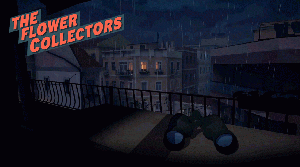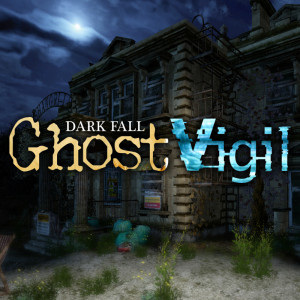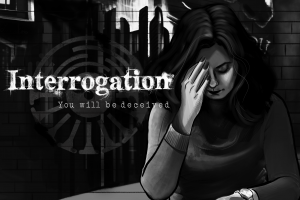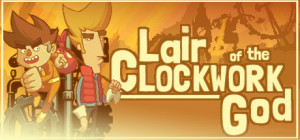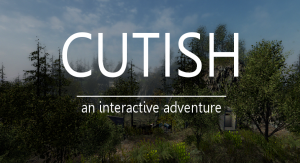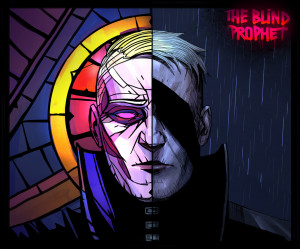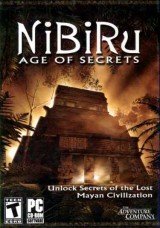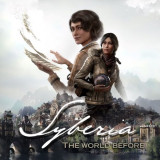Review for The Flower Collectors
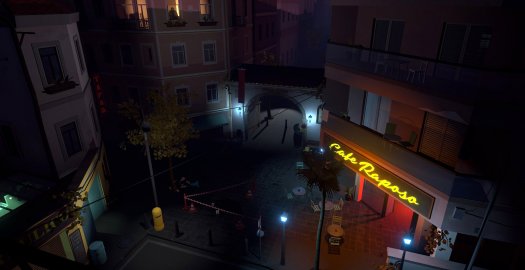
Rear Window is a masterpiece of cinema. It’s one of Alfred Hitchcock’s finest, starring the charming James Stewart as a photographer who has broken his leg, forced to spend days inside in a wheelchair during a heatwave. With nothing much around for entertainment, he uses his binoculars to spy on his apartment complex neighbours and soon gets embroiled in a mystery, with the delightful Grace Kelly aiding his investigation. If you’ve never seen it, do yourself a favour and correct that oversight.
Developer Mi'pu'mi Games openly acknowledge they were heavily inspired by that 1954 film for their game The Flower Collectors. That alone was enough to excite me: it seemed like a perfect concept for a video game that very few have attempted before. Perhaps that’s because it takes some bravery to try and imitate the Master of Suspense.
The Flower Collectors takes the core voyeuristic concept of someone watching the world outside their apartment, aided by a sidekick to crack a case, but transposes the location from America to Spain, where it tells a fairly straightforward story of corruption starring anthropomorphic animals. It’s moderately entertaining, boosted by its inviting setting and solid voice acting, but is underserved by the nuts and bolts of the gameplay itself, which is often slow and unengaging and delivered with clunky animation. Perhaps it was hampered by time or budget, or both, as there’s very clearly potential here, but this is nonetheless an admirable attempt at something different than the norm.
The game is set in 1977, a couple of years after the death of Spanish dictator Francisco Franco. The country is transitioning from its nationalist regime into a modern democracy, but there’s still leftover political unrest as some radical groups want to stamp out anyone they consider different (think writers, painters, minorities) before they “disturb the peace.” (Of course, history is bound to repeat itself endlessly for those who refuse to learn from it, so parallels to our own times are easy to see.)
Players take control of Jorge, a respected former member of the armed police who now relies on painkillers and a wheelchair following an accident. Jorge spends most of his days sitting on the balcony of his small Barcelona apartment, looking down on the plaza and using the folks going about their daily business as inspiration for his sketches. Intriguingly, he’s a flawed character whose less appealing aspects are revealed as the story progresses, but even at the beginning he’s incredulous about female mechanics and shouts at a homeless man to get a job.
The first ten minutes are spent snooping on the locals to introduce them: the waiter at the café opposite Jorge’s building, the chess-loving priest, the well-dressed cabaret singer. There are no humans here, as everyone is represented by different animals. It’s purely a visual thing, since no-one particularly exhibits familiar species traits, but the bouncer being a bulky gorilla and the grandma looking like a hunched reptile are fitting choices. This initial slice of life makes for a relaxed opening as you get your bearings on the surrounding area.
To this outsider, the plaza looks suitably Spanish with its stone-coloured buildings, window shutters and flower boxes. I often found myself looking through the windows, hoping to catch a glimpse of events irrelevant to the main story, but I was never rewarded for extraneous peeping. Everything is nicely rendered in 3D, with some effective use of lighting as day turns to night and back. Some nice environmental details like the flapping of a hung-up sheet in the wind are also welcome. I would have liked to see more change to the plaza over the course of several days in which the story plays out, but the passage of time and changing weather create different moods and help mix things up.
You can also explore Jorge’s own apartment, though there’s not a whole lot to see. It’s quite small and the number of things you can interact with are limited, apart from checking out the photos on the wall. Strangely, there’s a door that you never use; presumably it’s a bathroom, but it would have added to the realism if you could at least look inside. You can venture out into the hallway, but it’s wasted space since you can’t knock on any doors or use the stairs. Much more could have been done to reflect Jorge’s personality in his belongings because, photos aside, it’s pretty generic.
After the initial snooping, Jorge wakes in the night due to a roof leak. He then hears gunfire and sees a dead body lying in the middle of the plaza. It’s an exciting hook, thanks mainly to the atmospheric effects as the rain pours down and lightning flashes. Some of the other townsfolk have woken up too, silhouetted in their windows as they look down upon the crime scene. Jorge rings for the police and is disturbed by desperate knocking at the door. Enter Melinda, a young feline reporter (for what Jorge describes as “the one lefty rag”) who had been due to meet the victim to get information for a story she’s writing. It’s here that signs of some undercooked writing show: Jorge and Melinda’s initial interaction is so brief that it skirts the boundaries of believability, with neither character properly probing the situation they both find themselves in. The two have never met before and it doesn’t make sense for Melinda to run up to Jorge’s apartment door after witnessing the murder, so you just have to roll with it.
The next morning, Melinda wants to investigate further and asks Jorge to be her eyes in the sky. Jorge stays up top with his camera and binoculars, while Melinda heads down to the plaza where the corpse remains, though now guarded by two police officers. Jorge and Melinda each have a walkie-talkie so they can keep in touch, though you can’t use this whenever you want. Melinda plans to find out who murdered her source and hopefully uncover what information he had, so you help her scan the plaza for clues and direct her towards people to talk to as potential witnesses or to listen in on their conversations. In doing so, you discover that everyone seems to have a secret of their own, so your case becomes a matter of following these leads to find out what those secrets are and whether they link to the homicide.
The top left of the screen displays your current objectives: observe this building, look for something, talk to this person, and so on. You control Jorge from a first-person perspective, using the WASD keys for movement and the right mouse button to zoom in with the binoculars or camera (whichever Jorge is holding at that point). A prompt will appear when you need to do something, whether clicking on the walkie-talkie to direct Melinda to go somewhere or pressing the spacebar to snap a photo of an important moment. You can also take non-essential photos whenever you’re holding the camera, but I was disappointed that these didn’t show up anywhere – even tucked away in a menu would have been nice.
Never do you switch to Melinda, which is a double-edged sword. I respect the developer’s desire to stick to their guns on the core conceit, but it can be a bit dull to sit there and wait for something to play out. For example, you tell Melinda to go talk to someone, then watch from afar as she does so. It’s even more boring when Melinda goes snooping inside buildings, searching for clues or evidence, and all you get are snippets over the walkie-talkie. I don’t mind a leisurely pace, but too often I was left wishing that I had something more engaging to do.
Compounding matters is the fact that what you do get to do is all simple stuff. There’s a lot of handholding and essentially no challenge. The only times I struggled were when I knew what I needed to do – safely guide Melinda across the plaza without the police seeing her, for example – but didn’t know where I was meant to be looking to activate the prompt. This happened a couple of times and was frustrating, but much of the game is a breeze because you only have a limited number of interactions. Scan the environment and you’ll eventually find what you’re looking for, whether you intend to or not. Some tasks are set against a timer, like when you are told to “observe the cabaret,” but it’s so obvious what you need to look at that the countdown provides only mild tension. You can fail these segments and will miss out on some story nuance, but you’d have to be purposely trying not to succeed for that to happen.
At set moments, Jorge and Melinda gather around the noticeboard in the former’s apartment to assess what they’ve discovered. Here you need to match questions to Jorge’s photos and sketches, but again there’s little challenge since a highlight appears where you need to place something. Rather than being a deductive process, this is intended as a way to recap the story, clearly for the benefit of the player rather than for any in-game necessity, but it feels pointless since the plot is relatively straightforward anyway.
Despite the lack of complexity, I still enjoyed the tale because it shines a light on a specific political era that I’ve not seen played out in a game before. It’s not a true story as such, but it’s inspired by real historical events. It’s nice to find out more about Jorge’s history through his chats with Melinda and his reminiscing when looking at photos, and to see how his attitudes begin to change as he confronts his past and discovers the circumstances behind the murder. However, none of the plot points are surprising. For example, the first moment I looked through the glass roof of the mechanic’s shop and saw what was inside, I knew how that thread would be spun. The same was true when Jorge met an old friend. Always being one step ahead of the central characters is rare for me but a bit disappointing here, as it makes any potential surprises less impactful.
The main voices you hear are Jorge and Melinda’s, though others do crop up briefly (other females share the same voice actor and sound distractingly too much like Melinda). Both sound American, though they put a Spanish accent on certain words, and do a good job. I liked Jorge’s deep and gravelly voice, which reflects his age and cynicism well, whilst still lending some warmth. Melinda is feistier, nicely portraying a young woman standing firm in her beliefs, but she tackles moments of vulnerability and shock equally well. She also sounds like the older Clementine from The Walking Dead, so much so that I was shocked that it wasn’t the same actor.
The music is also good, weaving a consistent motif throughout the various tracks with hints of traditional Spanish flamenco. The slow strings and drums lend tension to the investigative scenes, giving off some noir vibes, before picking up in tempo and intensity in times when Melinda is trying to stay hidden or breaking in somewhere. Occasionally you’ll hear semi-muffled jazz tunes seeping out of the neon-lit cabaret, which is effective as a symbol of the new culture pushing against the old. Other times there’s no music at all, just the hubbub of plaza life and the blowing of wind, which is just as effective at setting a mood.
Unfortunately, one of biggest problems in The Flower Collectors is its clunky animation. Every character has a very limited set of gestures, like waving their hands or slapping their leg in laughter. It’s like something out of The Sims, except not even as nuanced as that. You can try to look past it most of the time, but some weightier scenes lose their impact as a result, like when you witness brutality by someone who appears to just be stamping their feet on the spot. Elsewhere people will glide across the floor, spin on the spot, or not look at each other when talking. In a couple of instances, I spotted different characters gesticulating and seemingly talking to thin air.
The lack of animation can be just as disconcerting when characters do nothing at all and just stand still. At first I was creeped out when I saw someone in the apartment opposite Jorge’s staring straight at me, stiff as a statue. Perhaps there’d be a ghostly twist? No, it was just Dona Anna, the old lady, who remains motionless for most of the game until she’s needed for the plot. This happens numerous times, like the priest just staring at a wall or the homeless man static in the church garden. It’s like peering behind the curtain, where you can see the mechanics of them waiting for their turn to move. The poor animation, or often the complete lack of it, is really damaging to immersion. It wouldn’t have taken much to have them interact with their environment just enough to be believable.
Unlike the Hitchcock classic that inspired it, I came away from The Flower Collectors underwhelmed. It’s fine, but nothing more. You’ll get around three hours of gameplay, which feels right; there isn’t enough gameplay on offer to warrant more time. There are undoubtedly seeds of a greater game here, but it feels restricted in nearly all aspects – in what you can explore, in the interaction available, and in the presentation. A bit of challenge and fear of genuine failure wouldn’t have gone amiss either, since the story could certainly lend itself to both. There are good things to appreciate here, most notably in the unique framing of the passively experienced story and the audio production, but not enough to overlook the notable problems. I commend Mi'pu'mi Games for their attempt and would welcome a follow-up with these issues ironed out, but you’re better off sticking with Rear Window for now.


